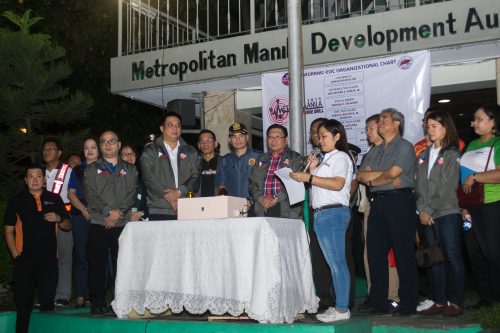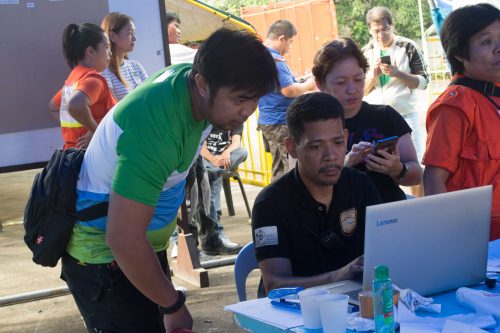PLDT and wireless unit Smart Communications, Inc. once again provided emergency communications support for this year’s Metro-wide earthquake drill conducted by the Metropolitan Manila Development Authority (MMDA).
The fifth Metro Manila Shake Drill, which simulated the “Big One” or a magnitude 7.2 earthquake situation, began at 4 a.m. last July 27 to portray a massive nighttime earthquake situation.

“We want to simulate how long it will take for all concerned agencies and units to get to designated emergency operations center and staging areas,” said MMDA chief of staff Michael Salalima.
PLDT and Smart provided connectivity support and satellite communications services for emergency responders at the MMDA quadrants. The MMDA has divided Metro Manila into quadrants to better manage response and rescue operations when the Big One strikes.
The northern quadrant will use the Veterans Memorial Medical Center Golf Course; eastern quadrant, LRT 2 Santolan depot; western quadrant will occupy Intramuros Golf Course, and southern quadrant, Villamor Golf Course.
At the start of the program, the officials led by MMDA Chair Danilo Lim and Department of Science and Technology (DOST) Undersecretary Renato Solidum converged in front of the agency’s head office and assumed the “duck, cover, and hold” position. Workers, government and media personnel, responders, and other participants joined the activities, which included the staging of drills at the quadrants.

For this year’s shake drill, MMDA joined forces with utility companies and the private sector, including the Philippine Disaster Resilience Foundation (PDRF) and National Resilience Council (NRC).
The annual #MMShakeDrill drill aims to strengthen the capacity of individuals, households, and local authorities to prepare for and respond to the Big One. According to the Metro Manila Earthquake Impact Reduction Study (MMEIRS), this scenario may leave more than 30,000 dead and over 100,000 injured.
In times of calamities, PLDT and Smart provide communications as aid to affected residents and responders. This support includes the availability and quick restoration of network services in hard-hit areas; and free messages, emergency cell broadcasts, calls, charging, Wi-Fi, data, and satellite connectivity, among other solutions.
As part of the companies’ #SafePH advocacy, PLDT and Smart are committed to use technology to enhance disaster preparedness and response and help build more resilient communities.

